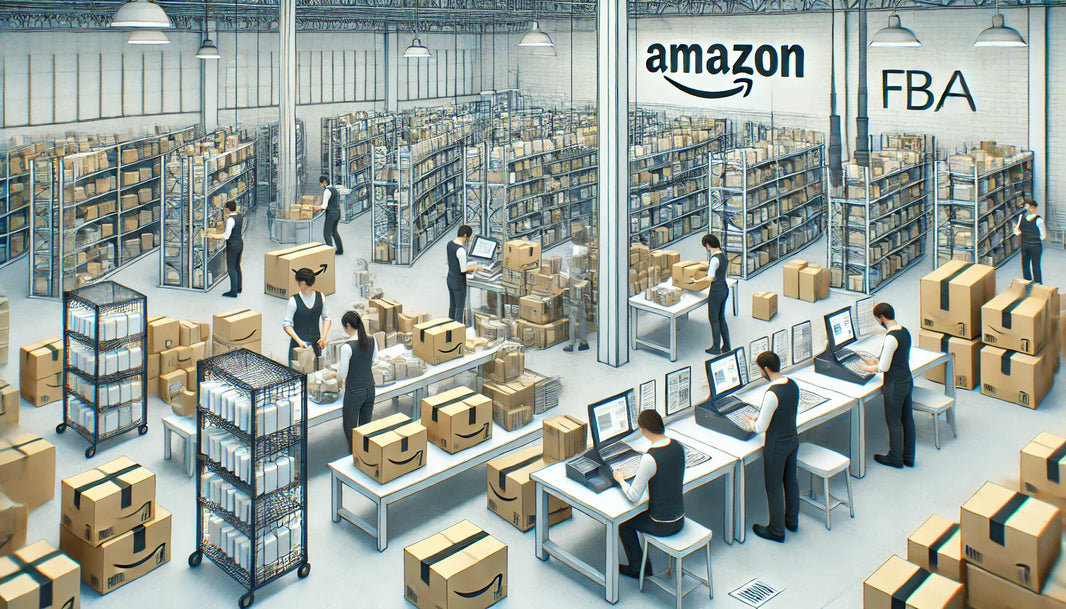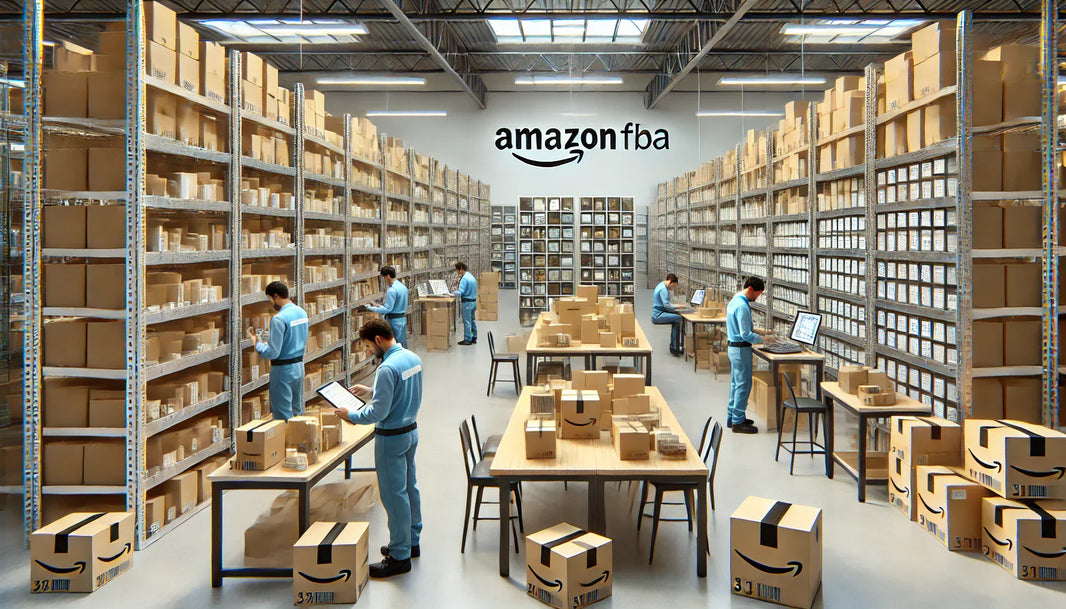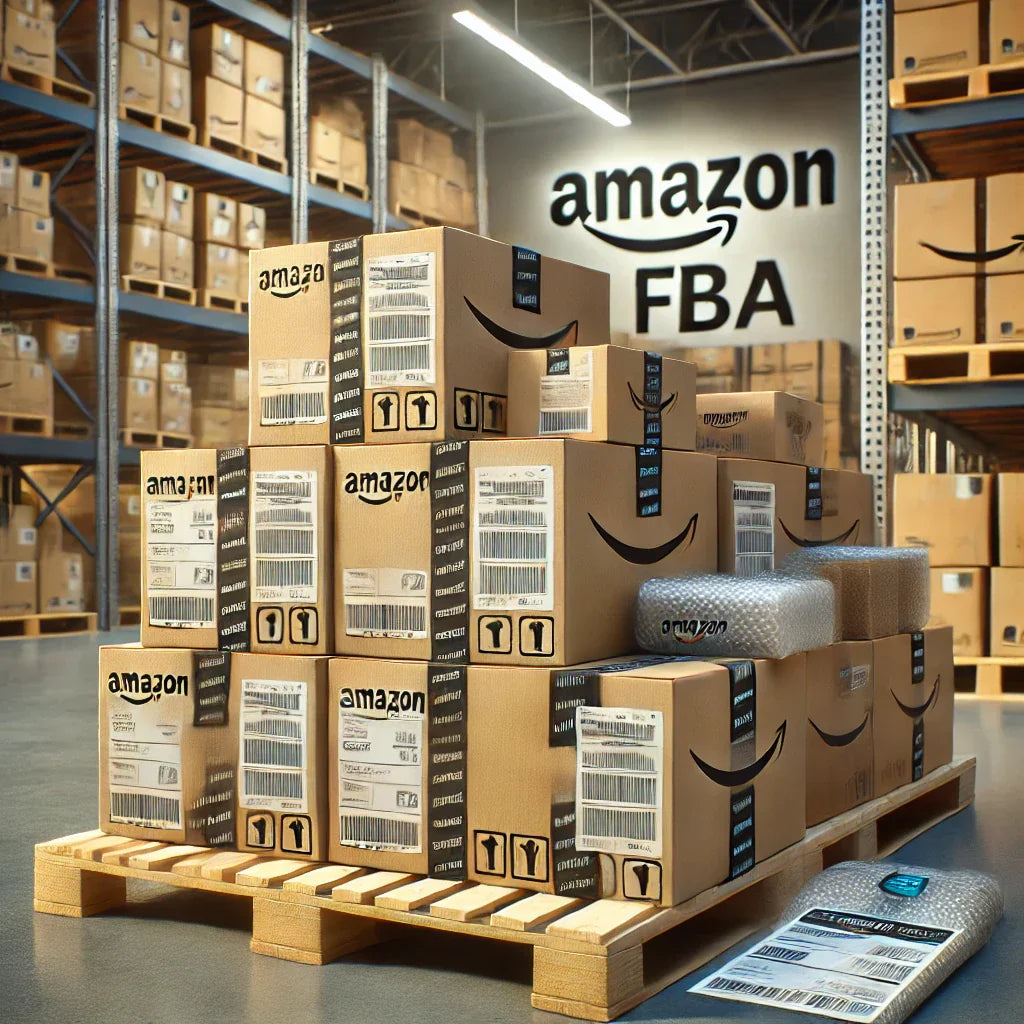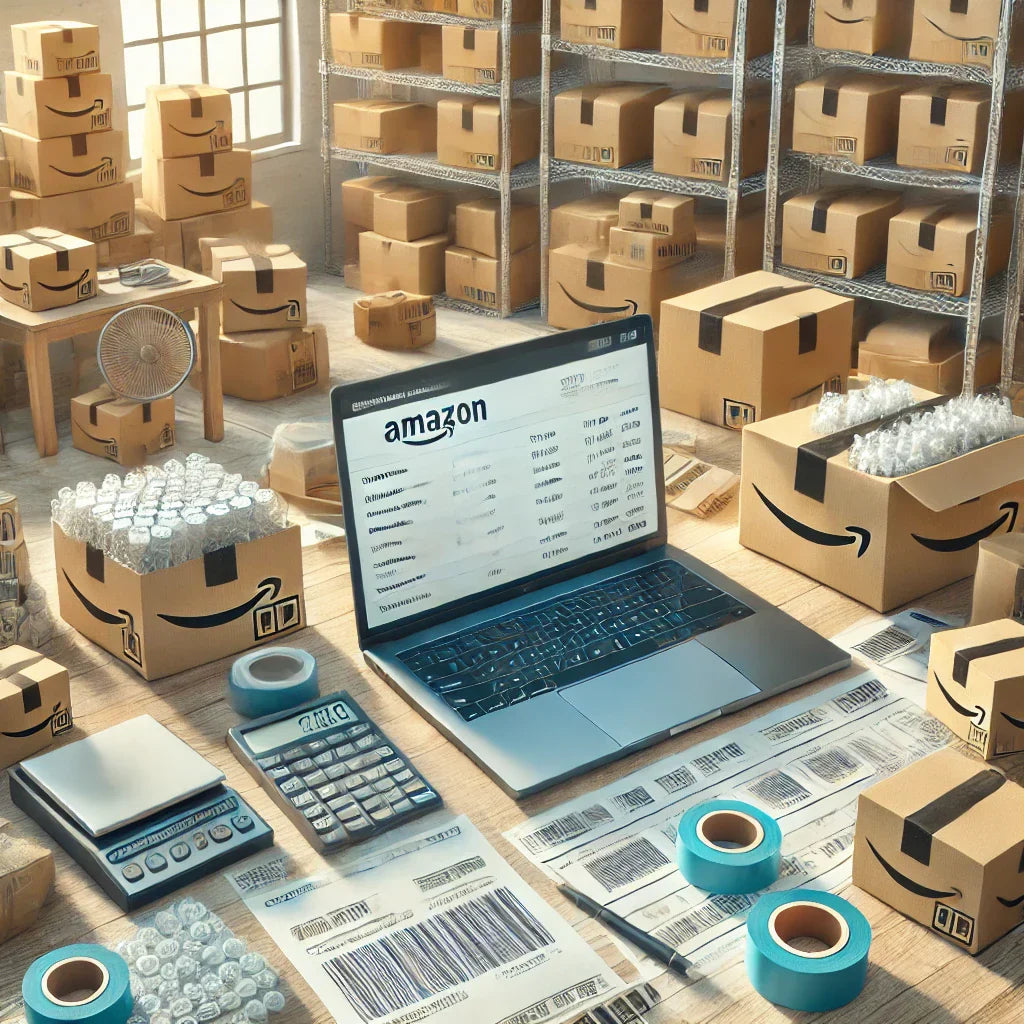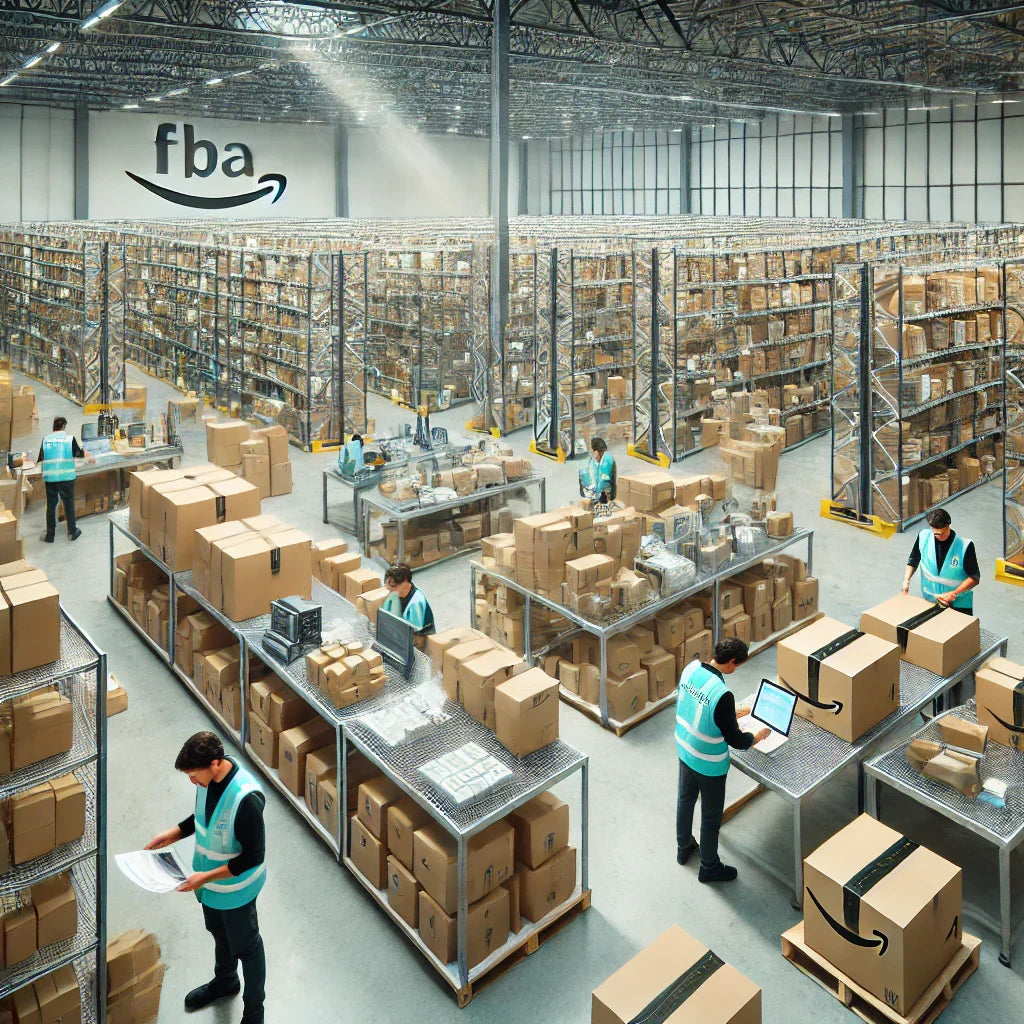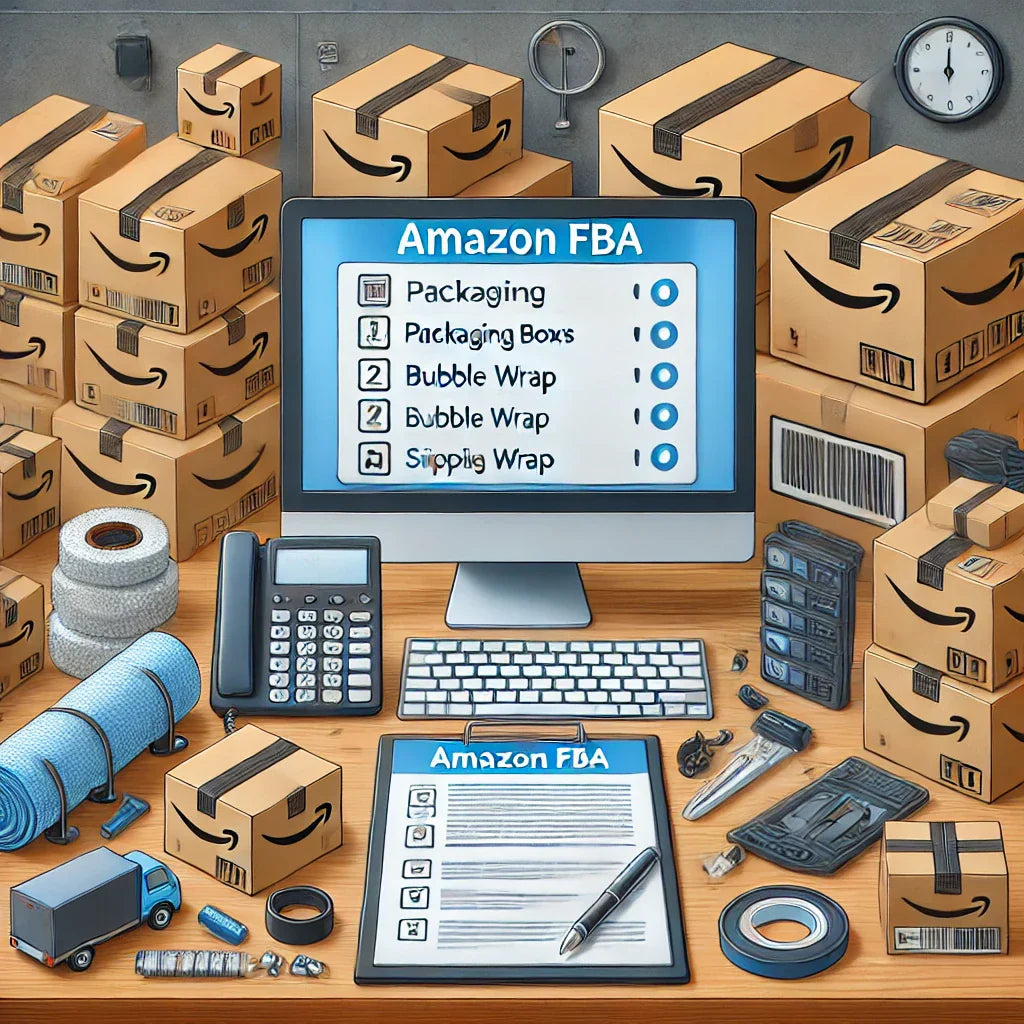In the rapidly evolving world of e-commerce, maintaining operational efficiency while scaling up is a major challenge for many businesses. Third-party logistics (3PL) solutions have emerged as a transformative force, empowering e-commerce enterprises to streamline operations, manage complex supply chains, and meet growing customer expectations with agility. By leveraging the expertise and infrastructure of 3PL providers, businesses can focus on their core competencies and strategic growth without the burden of logistical hurdles. This article delves into how 3PL logistics solutions drive scalability and enhance the competitive edge for e-commerce companies.

Understanding 3PL Logistics Solutions
3PL, or third-party logistics, refers to outsourcing various elements of a business’s logistics operations to an external provider. These providers offer services that span from warehousing, inventory management, and order fulfillment to freight forwarding and last-mile delivery. The primary role of a 3PL provider is to handle these operational tasks efficiently, allowing e-commerce companies to channel their resources toward innovation, marketing, and customer service.
Key Features of 3PL Services:
- Comprehensive Fulfillment Centers: 3PL providers often operate large-scale, strategically located fulfillment centers equipped with advanced technology to expedite order processing and dispatch.
- Advanced Technology Integration: Many 3PLs utilize cutting-edge inventory management systems, automation tools, and data analytics to ensure seamless operations.
- Scalable Solutions: Whether an e-commerce business experiences seasonal spikes or rapid growth, 3PL providers can quickly adapt to changing demands.
How 3PL Solutions Support Business Growth
One of the primary reasons e-commerce businesses turn to 3PL providers is their ability to scale operations seamlessly. Scaling involves more than just increasing production capacity; it requires a coordinated effort across the supply chain to maintain service quality and customer satisfaction.
1. Enhanced Operational Efficiency
Operational efficiency is a cornerstone of successful e-commerce businesses. With 3PL solutions, companies benefit from streamlined operations that reduce overhead and improve the speed of order fulfillment. This efficiency arises from a combination of expert handling, optimized workflows, and state-of-the-art technology.
Benefits Include:
- Reduced Errors and Delays: Automation and experienced staff ensure that orders are picked, packed, and shipped accurately and on time.
- Improved Cost Management: 3PLs often negotiate bulk shipping rates and leverage economies of scale, translating into lower costs for e-commerce businesses.
2. Focus on Core Business Activities
Outsourcing logistics enables e-commerce owners to dedicate more attention to essential business activities such as product development, marketing strategies, and customer engagement. This strategic focus can lead to better product innovation and enhanced brand loyalty.
Illustrative Example: An online retailer specializing in unique, handmade products might find it challenging to handle logistics in-house due to fluctuating demand. By partnering with a 3PL, the retailer can trust that orders are being handled efficiently, allowing them to focus on expanding their product line or entering new markets.
Technological Advantages Provided by 3PLs
In today’s digital era, leveraging technology is essential for e-commerce businesses looking to maintain a competitive advantage. Many 3PL providers are at the forefront of adopting new technologies that can significantly enhance supply chain operations.
1. Inventory Management Systems
3PLs often deploy sophisticated inventory management systems that provide real-time visibility into stock levels. This capability ensures that e-commerce businesses can accurately track products and manage their inventory proactively.
Benefits Include:
- Minimized Stockouts: With up-to-date inventory data, businesses can prevent stock shortages and backorders.
- Better Demand Forecasting: Historical data analysis and predictive algorithms help companies plan more effectively for future demand.
2. Data Analytics and Reporting
3PLs utilize data analytics to provide actionable insights into various aspects of the supply chain. These insights empower e-commerce businesses to make informed decisions, optimize their strategies, and improve overall performance.
Impact on E-commerce:
- Enhanced Decision-Making: Access to performance metrics enables businesses to understand peak times, shipping delays, and customer preferences.
- Cost Reduction: By analyzing shipping routes and identifying the most efficient methods, 3PLs help reduce transportation expenses.
The Role of 3PLs in Enhancing Customer Experience
Customer satisfaction is pivotal in retaining a loyal customer base and promoting positive word-of-mouth for e-commerce brands. 3PL providers play a vital role in delivering an exceptional customer experience through efficient order processing and timely delivery.
1. Faster Shipping Times
E-commerce consumers often prioritize businesses that offer quick and reliable delivery. 3PLs help fulfill this expectation by utilizing a network of warehouses located near key markets, facilitating quicker shipping and reduced transit times.
Example: A 3PL provider with fulfillment centers across multiple regions can ensure that an order placed in the morning is packed, dispatched, and delivered within one or two days.
2. Flexibility in Delivery Options
Modern consumers value flexibility, whether it’s choosing specific delivery times, same-day shipping, or curbside pickup. 3PL providers enable e-commerce businesses to offer various delivery options, enhancing customer satisfaction.
Customer-Centric Services Include:
- Real-Time Tracking: Providing customers with real-time updates on their order’s status adds transparency and trust.
- Seamless Returns Management: 3PLs handle return logistics efficiently, ensuring that customers receive prompt refunds or replacements.
Overcoming E-commerce Challenges with 3PL Support
E-commerce businesses face several challenges as they scale, including unpredictable demand, logistical complexity, and competition from global retailers. Here’s how 3PL solutions help tackle these issues:
1. Managing Seasonal Demand
Seasonal spikes can strain in-house logistics teams and lead to poor service quality if not managed properly. 3PLs offer scalable solutions that align with fluctuating order volumes, ensuring that businesses can handle peak periods seamlessly.
Example Scenario: A fashion e-commerce store experiencing a surge in sales during the holiday season can rely on a 3PL to scale up operations without missing delivery deadlines or compromising service quality.
2. Expanding into New Markets
When an e-commerce business decides to expand internationally or enter a new market, logistical challenges can increase exponentially. 3PLs with global networks and expertise in cross-border logistics simplify this process, managing customs clearance, international shipping, and local distribution.
Key Benefits:
- Simplified Customs Processes: Experienced 3PL providers manage documentation and compliance, reducing the risk of delays.
- Localized Expertise: Understanding regional nuances in delivery expectations helps maintain a consistent brand experience worldwide.
Sustainability and 3PLs: A Modern Imperative
As consumer awareness around environmental sustainability grows, e-commerce businesses are under increasing pressure to adopt eco-friendly practices. 3PL providers play an essential role in helping these businesses integrate sustainability into their supply chain.
1. Eco-Friendly Warehousing
Many 3PLs are adopting green initiatives such as using energy-efficient warehouses and sustainable packaging solutions. These practices reduce the carbon footprint of the logistics chain and align with consumer values.
Impact:
- Positive Brand Image: Partnering with eco-conscious 3PLs can improve a business’s reputation and attract environmentally aware customers.
- Compliance with Regulations: Some regions have strict sustainability mandates; 3PLs help businesses meet these requirements without disruption.
2. Optimized Transportation Routes
Through advanced route optimization technologies, 3PLs minimize fuel consumption and reduce emissions during transportation. This approach not only supports environmental goals but also leads to cost savings through more efficient delivery routes.
Example of Implementation: Utilizing AI-driven logistics software to identify shorter and less congested paths can drastically reduce the number of delivery miles traveled, contributing to lower emissions and faster delivery times.
Building Long-term Partnerships with 3PL Providers
The success of leveraging 3PL solutions largely depends on the strength of the partnership between the e-commerce business and the provider. Here are strategies for building productive, long-term relationships:
1. Transparent Communication
Clear and open communication with 3PL partners ensures alignment on expectations, service levels, and shared goals. Regular check-ins and reviews help identify any issues before they escalate and provide opportunities for continuous improvement.
2. Customization and Flexibility
While standard services are beneficial, customized solutions tailored to specific business needs can add significant value. E-commerce businesses should seek 3PL partners that are willing to adapt their services to align with the business’s unique operational requirements.
Advantage of Customization:
- Tailored Fulfillment Processes: Special handling requirements, personalized packaging, or exclusive service features can set a brand apart in a competitive market.

Leveraging 3PL Solutions for Niche E-commerce Sectors
While the overarching benefits of 3PL solutions apply to most e-commerce businesses, there are unique advantages when these services are tailored to niche markets. Whether dealing with specialized products like electronics, perishable goods, or luxury items, a tailored 3PL approach can make a significant difference.
1. Handling High-Value and Luxury Goods
E-commerce stores dealing with luxury or high-value items face challenges related to secure storage, specialized handling, and discreet shipping. 3PLs with expertise in managing luxury goods can offer features such as climate-controlled warehousing, enhanced security systems, and white-glove delivery services.
Advantages Include:
- Secure Storage Facilities: Warehouses equipped with advanced surveillance, restricted access, and robust security protocols.
- Premium Handling: Trained personnel who understand the importance of careful handling and appropriate packaging for valuable items.
- White-Glove Delivery Services: Personalized delivery options that include set-up assistance, unboxing, and even demonstrations, providing an elevated customer experience.
Case in Point: An online jewelry retailer utilizing a 3PL provider with expertise in luxury logistics can ensure each piece is stored securely and delivered with care, enhancing brand trust and customer satisfaction.
2. Managing Temperature-Sensitive and Perishable Items
E-commerce businesses in the food, pharmaceutical, or floral industries require specialized storage and transportation solutions to maintain product integrity. 3PLs with temperature-controlled facilities and cold chain logistics capabilities can ensure that perishable items are kept at optimal temperatures throughout the storage and delivery process.
Key Benefits:
- Maintained Freshness: With refrigerated and climate-controlled storage, perishable products remain fresh from warehouse to doorstep.
- Compliance with Regulations: 3PLs familiar with health and safety regulations ensure that businesses meet all standards, avoiding penalties and customer complaints.
Example of Success: A farm-to-table organic grocery store that sells fresh produce online can partner with a 3PL specializing in cold chain logistics, ensuring that fruits and vegetables arrive at the customer’s home in pristine condition.
Advanced Technology Integration in 3PL Services
The integration of advanced technologies is reshaping how 3PL providers operate and deliver value to their e-commerce partners. These technologies not only streamline logistics but also provide real-time data and enhance transparency across the supply chain.
1. Automation in Warehousing and Fulfillment
Automation is a game-changer for e-commerce businesses that require high-volume order processing. 3PLs with automated warehousing systems use robotic picking, automated conveyor systems, and AI-driven inventory management to accelerate fulfillment processes.
Benefits of Automation:
- Increased Accuracy: Automated systems reduce human errors in picking and packing, leading to higher customer satisfaction.
- Faster Processing Times: Robotics and AI tools enable 24/7 operations, speeding up order fulfillment during peak demand periods.
- Scalability: As order volumes fluctuate, automated systems can easily adjust, maintaining consistent service levels.
Highlight: A tech-based 3PL provider using automation can process hundreds of thousands of orders per day, far exceeding the capacity of manual operations. This capability can be pivotal for businesses experiencing sudden viral growth or seasonal sales spikes.
2. Internet of Things (IoT) and Real-Time Tracking
The Internet of Things (IoT) plays a crucial role in improving supply chain transparency. IoT-enabled devices can track shipments in real-time, providing businesses and customers with accurate delivery timelines.
Applications of IoT:
- Temperature Monitoring: IoT sensors in refrigerated trucks can monitor and report temperature data, ensuring products remain within the required range.
- Location Tracking: GPS-enabled trackers provide real-time location updates, reducing uncertainty and enabling proactive issue resolution.
- Predictive Maintenance: IoT devices help 3PLs maintain their fleet and equipment by predicting maintenance needs, minimizing delays due to equipment failure.
E-commerce Implication: For businesses selling perishable products, IoT technology ensures that any deviation from the set temperature or delivery route triggers an immediate alert, preventing product loss and enhancing reliability.
Success Stories: 3PL Solutions in Action
Understanding how real-life businesses have leveraged 3PL solutions to scale can offer valuable insights into their strategic benefits. Here, we explore a few examples of how companies have effectively partnered with 3PLs to achieve significant growth and customer satisfaction.
1. The Story of a Fast-Growing Fashion Retailer
An emerging fashion brand that quickly gained popularity through social media faced an overwhelming influx of orders that strained its in-house logistics. Partnering with a 3PL provider enabled them to scale operations rapidly and meet customer expectations without sacrificing quality.
What Worked:
- Flexible Warehousing: The 3PL provider allocated additional warehouse space during seasonal sales.
- Enhanced Fulfillment Speed: Leveraging automation, the 3PL managed to process orders faster than the brand’s original in-house team.
- Returns Management: A streamlined reverse logistics system was put in place, simplifying customer returns and ensuring quick resolutions.
Outcome: The brand was able to maintain its high growth trajectory, improve delivery times, and build a reputation for reliable service.
2. Scaling a Health and Wellness Brand
A health and wellness company specializing in supplements and organic products struggled with inventory management as it expanded its product line. Collaborating with a 3PL equipped with state-of-the-art inventory systems allowed them to maintain better stock control and avoid costly stockouts.
Strategic Advantages:
- Real-Time Inventory Visibility: The company accessed detailed inventory reports, helping them make data-driven decisions.
- Efficient Distribution: The 3PL’s network reduced delivery times, broadening their customer base to include clients in remote regions.
- Temperature-Controlled Storage: Supplements requiring cool storage were kept at optimal temperatures to ensure product efficacy.
Result: The company experienced a 30% increase in customer retention and a reduction in overhead costs associated with manual inventory checks and storage inefficiencies.
Customized 3PL Solutions for E-commerce Businesses
Not all 3PL providers offer a one-size-fits-all solution. The best providers work closely with their clients to create tailored services that align with specific business models, products, and growth targets.
1. Tailored Packaging and Branding Solutions
Packaging is more than just a means of protecting products; it’s an essential element of branding and customer experience. Some 3PLs offer bespoke packaging services that allow e-commerce businesses to maintain their brand identity even when logistics are outsourced.
Examples of Custom Solutions:
- Branded Packaging Materials: 3PLs can source and use custom boxes, labels, and inserts that reinforce the e-commerce brand.
- Sustainable Options: Providers that offer eco-friendly packaging solutions align with the growing demand for sustainability in e-commerce.
Impact on Brand Perception: E-commerce businesses using unique, branded packaging often see higher customer satisfaction and brand loyalty, as the unboxing experience becomes part of the product’s appeal.
2. Specialized Handling for Diverse Product Types
For e-commerce businesses dealing in diverse product categories, a 3PL partner that can accommodate specialized handling is essential. This is particularly true for fragile items, oversized goods, or regulated products.
Considerations for Specialized Handling:
- Fragile Items: Extra care in picking, packing, and transporting delicate items minimizes breakages and returns.
- Hazardous Materials: Products that fall under specific regulatory guidelines, such as batteries or chemical goods, need providers that are well-versed in safe handling and compliance.
- Oversized Goods: Furniture and appliances require 3PLs with equipment and facilities capable of storing and shipping large items safely.
The Future of 3PL Solutions in E-commerce
The future of 3PL in e-commerce promises even more advanced technology, sustainability initiatives, and customizable services that cater to specific business needs. As consumer expectations evolve, 3PLs are set to become more than just logistics partners—they will be integral to the overall business strategy.
1. Expanding Role of Artificial Intelligence (AI)
AI is expected to play a significant role in enhancing the capabilities of 3PLs. From automating supply chain decisions to improving demand forecasting, AI will enable e-commerce businesses to achieve unparalleled levels of efficiency.
Anticipated Benefits of AI:
- Enhanced Predictive Analytics: AI-driven tools will improve forecasts of demand spikes and inventory needs, minimizing the risks of overstocking or stockouts.
- Dynamic Routing: AI algorithms can adapt delivery routes in real time to avoid traffic congestion, ensuring faster deliveries and optimizing fuel consumption.
- Intelligent Customer Service: Chatbots and AI-powered customer support tools will streamline communication between e-commerce businesses and their logistics providers.
2. Blockchain for Transparency and Security
Blockchain technology holds the promise of bringing unprecedented transparency and security to supply chain operations. By creating immutable records of every step in the logistics process, blockchain can help 3PLs and their clients track shipments with full visibility.
Potential Uses of Blockchain in 3PL:
- Fraud Prevention: Transparent, tamper-proof records help protect against fraud and unauthorized alterations in shipment data.
- Improved Accountability: Each transaction recorded on the blockchain can be traced back, ensuring that all parties involved in the supply chain are held accountable.
E-commerce Advantage: Brands that prioritize transparency can reassure their customers of product authenticity and ethical sourcing by leveraging blockchain-backed data.
3. Sustainability and Green Logistics
The environmental impact of logistics is under increased scrutiny, and e-commerce businesses are seeking ways to minimize their ecological footprint. 3PLs are at the forefront of adopting green logistics practices that not only help the environment but also appeal to environmentally conscious consumers. As sustainability becomes more important, 3PLs are implementing innovative solutions to reduce carbon emissions and promote eco-friendly practices throughout the supply chain.
Sustainable Packaging and Materials
A major component of green logistics is the use of sustainable packaging. 3PL providers are increasingly offering packaging options that reduce waste and utilize biodegradable or recyclable materials. This shift helps e-commerce businesses align with eco-conscious consumer expectations and adhere to environmental regulations.
Sustainable Solutions:
- Recyclable and Biodegradable Packaging: Using materials that can be easily recycled or biodegraded reduces waste and contributes to a circular economy.
- Reduced Packaging Waste: Optimizing packaging size to avoid excessive materials helps reduce overall waste and shipping costs.
- Custom Eco-Friendly Solutions: 3PLs collaborate with businesses to create packaging that is not only eco-friendly but also tailored to the product’s specific needs.
- Impact on E-commerce: Brands that adopt sustainable packaging often see increased customer loyalty as more consumers prefer shopping with companies that reflect their values.
Green Warehousing Initiatives
Green warehousing involves adopting practices that minimize the carbon footprint of storage facilities. This can include the installation of energy-efficient lighting, using solar panels, and implementing smart energy management systems. Many 3PL providers are investing in eco-friendly warehouse operations to attract e-commerce partners focused on sustainability.
Green Practices Include:
- Energy Efficiency: LED lighting, motion sensors, and natural ventilation systems help reduce energy consumption in warehouses.
- Renewable Energy Sources: Warehouses powered by solar, wind, or other renewable sources significantly cut down on emissions.
- Sustainable Facility Design: Buildings constructed with eco-friendly materials and layouts that optimize natural light contribute to reduced energy use.
- Business Benefit: E-commerce businesses that partner with 3PLs offering green warehousing can market their commitment to sustainability as a competitive advantage.
Route Optimization and Emission Reduction
Transportation is one of the most significant contributors to a company’s carbon footprint. 3PLs utilize advanced route optimization technology to reduce fuel consumption, cut delivery times, and lower emissions.
Technologies Used:
- AI and Machine Learning: Algorithms predict traffic patterns and suggest the most efficient routes in real-time, minimizing fuel usage.
- Electric and Hybrid Fleets: Some 3PLs have started using electric or hybrid delivery vehicles to further reduce their environmental impact.
- Collaborative Shipping Models: Shared transport routes for multiple clients help maximize vehicle load capacity and decrease the number of trips.
- E-commerce Advantage: Businesses that utilize 3PLs with emission-reducing strategies can highlight these efforts as part of their sustainability initiatives, attracting customers who prioritize eco-friendly brands.

Adapting to Consumer Trends with 3PL Solutions
The ability of e-commerce businesses to adapt to changing consumer behaviors is crucial for growth. 3PLs provide the flexibility and infrastructure needed to pivot quickly in response to new trends and demands.
1. Meeting the Demand for Faster Deliveries
The surge in consumer expectations for same-day or next-day delivery has transformed logistics. E-commerce businesses must meet these demands to remain competitive, and 3PLs with strategically located distribution centers make this possible. By outsourcing to a 3PL, businesses can expand their reach and offer expedited shipping options without investing heavily in their own logistics network.
Examples of Adaptation:
- Strategic Warehousing: 3PLs maintain fulfillment centers in various regions, allowing businesses to store products closer to major customer bases.
- Last-Mile Delivery Services: The final leg of the delivery process is often the most challenging. 3PLs optimize last-mile logistics to ensure packages reach customers quickly and efficiently.
- Impact on Customer Loyalty: Providing fast delivery options not only meets consumer expectations but also fosters repeat purchases and long-term customer loyalty.
2. Customized Shopping Experiences
Personalization is becoming a standard expectation in e-commerce. Consumers want tailored product recommendations, customized packaging, and services that reflect their preferences. 3PLs that offer value-added services such as custom packaging, gift wrapping, and personalized notes help e-commerce businesses deliver unique shopping experiences.
3PL Solutions for Customization:
- Kitting Services: 3PLs assemble multiple products into a single package based on customer orders, enabling bundled offerings or promotional sets.
- Personalized Inserts: Including thank-you notes or promotional codes enhances the unboxing experience.
- Gift Services: Options for gift wrapping or special packaging can make products feel more special, boosting customer satisfaction.
- Advantage for Businesses: Brands that offer personalized experiences are more likely to build stronger relationships with their customers and encourage brand advocacy.
Streamlining Reverse Logistics with 3PLs
Efficient management of returns is crucial for maintaining customer satisfaction and minimizing costs. 3PL providers offer comprehensive reverse logistics solutions that help businesses manage returns efficiently while maintaining positive customer experiences.
1. Simplified Return Processes
Consumers expect hassle-free returns, and businesses that provide easy return options are more likely to gain repeat customers. 3PLs streamline the process by handling return shipping, product inspections, and restocking.
Benefits of 3PL Reverse Logistics:
- Quick Turnaround: Streamlined return processing ensures products are back in stock faster, minimizing potential revenue loss.
- Refurbishment and Resale: 3PLs can inspect and refurbish returned items, allowing businesses to resell them at a discounted rate and recoup some of the lost revenue.
- Data Collection: By analyzing return data, 3PLs can provide valuable insights into product quality and customer feedback.
Example: An electronics e-commerce retailer using a 3PL with efficient return logistics can process returns quickly, refurbish lightly used items, and resell them at a reduced cost, improving profitability and sustainability.
2. Reducing Return Costs
Managing returns in-house can be resource-intensive and costly. Partnering with a 3PL provider that specializes in reverse logistics helps e-commerce businesses reduce overheads and operational complexities.
Cost-Saving Strategies:
- Consolidated Return Shipments: Collecting returns in bulk before shipping them back to the warehouse reduces transportation costs.
- Automated Return Labels: Offering customers easy-to-print return labels minimizes the administrative workload and accelerates the return process.
- Efficient Inventory Reintegration: 3PLs can reintegrate returned items into inventory promptly, ensuring they are available for sale as soon as possible.
- Business Benefit: An effective reverse logistics system not only improves customer satisfaction but also optimizes resource allocation, allowing businesses to focus on core operations.
Strengthening Supply Chain Resilience with 3PLs
A resilient supply chain is critical for navigating disruptions, whether due to natural disasters, economic fluctuations, or global crises. 3PL providers play a pivotal role in helping e-commerce businesses build robust and adaptable supply chains.
1. Diversified Distribution Networks
3PLs typically operate extensive distribution networks that can be leveraged by e-commerce businesses to mitigate risks associated with single-location dependency. By using a distributed logistics model, companies can ensure that operations continue smoothly even if one part of the network is impacted by unforeseen events.
Benefits of Distribution Diversification:
- Reduced Risk of Disruption: Multiple distribution centers spread across different regions provide a buffer against local disruptions.
- Improved Delivery Speed: A diversified network can also enhance delivery times by positioning products closer to various customer bases.
Example: An e-commerce business that relies on a 3PL with multiple warehouses was able to continue fulfilling orders seamlessly during a regional storm that disrupted other competitors.
2. Flexible Storage Solutions
E-commerce businesses need the flexibility to scale storage space based on changing market conditions. 3PL providers offer on-demand warehousing that allows businesses to adjust their inventory storage as needed, reducing costs during low-demand periods and scaling up during peak seasons.
Advantages of Flexible Storage:
- Cost Efficiency: Pay-as-you-go models prevent businesses from committing to long-term leases that may not align with fluctuating storage needs.
- Seasonal Adaptability: During peak shopping seasons, such as holidays, businesses can easily expand their warehousing capacity to accommodate increased inventory.
- Strategic Insight: Flexible storage arrangements mean that e-commerce businesses can respond quickly to changing consumer demands without the burden of unused warehouse space during off-seasons.
Future Trends in 3PL and E-commerce Collaboration
As the e-commerce industry continues to evolve, so too will the nature of 3PL partnerships. The future promises even more advanced technologies, increased sustainability efforts, and customized solutions that cater specifically to the unique needs of different types of e-commerce businesses.
1. Integration with Augmented Reality (AR)
AR technology is set to become a game-changer in e-commerce. Some 3PLs are beginning to explore the use of AR for warehouse training and inventory management. This technology allows workers to visualize product placement, enhance training programs, and reduce errors in picking and packing.
AR Benefits:
- Improved Training Efficiency: AR tools provide interactive, on-the-job training for warehouse staff, leading to quicker onboarding.
- Error Reduction: Workers can see visual overlays that guide them through picking routes and product locations, minimizing mistakes.
- Potential E-commerce Application: A 3PL that integrates AR into its processes can help e-commerce businesses achieve more accurate and faster order fulfillment, leading to improved customer experiences.
2. Collaborative Robotics (Cobots)
The integration of collaborative robots, known as cobots, is revolutionizing how 3PLs manage warehouse operations. Unlike traditional industrial robots that function independently, cobots are designed to work alongside human workers, enhancing productivity and safety.
Enhancing Workforce Efficiency
Cobots can handle repetitive and labor-intensive tasks such as lifting, sorting, and packing, freeing human employees to focus on more complex and value-added activities. This collaboration leads to faster order fulfillment and reduces the physical strain on workers, which can improve job satisfaction and reduce turnover rates.
Key Benefits:
- Increased Throughput: Cobots can work continuously without fatigue, ensuring higher productivity, especially during peak seasons.
- Reduced Errors: Cobots are programmed to perform tasks with precision, which minimizes the potential for human error in picking and packing.
- Case Study Insight: A 3PL provider that implemented cobots saw a 40% increase in order processing speed while maintaining accuracy levels that exceeded those of a human-only workforce.
Flexible Deployment
One of the significant advantages of cobots is their adaptability. Unlike large, fixed robots, cobots can be reprogrammed and redeployed for various tasks within the warehouse, making them ideal for e-commerce businesses with shifting product lines or seasonal demands.
Applications in E-commerce:
- Dynamic Order Picking: Cobots can be quickly adjusted to prioritize products that are trending or in high demand.
- Support for Multichannel Fulfillment: E-commerce businesses that operate across various platforms can use cobots to handle different order types efficiently.
- Business Takeaway: The flexibility of cobots means that e-commerce partners working with 3PLs can adapt quickly to market changes without significant investments in new equipment.

Data-Driven Optimization Through 3PLs
The utilization of data analytics is essential for e-commerce businesses looking to optimize operations, improve decision-making, and maintain a competitive edge. 3PL providers harness data from various points across the supply chain to offer actionable insights that benefit their clients.
1. Predictive Analytics for Inventory Management
Accurate inventory management is critical for reducing costs and meeting customer expectations. By leveraging predictive analytics, 3PLs help e-commerce businesses forecast demand and adjust inventory levels accordingly.
How Predictive Analytics Helps:
- Demand Forecasting: Predictive models use historical sales data and market trends to estimate future demand, ensuring optimal stock levels.
- Seasonal Preparation: Businesses can proactively scale up or down based on anticipated seasonal fluctuations.
- Reduced Overstock and Stockouts: Maintaining balanced inventory minimizes excess storage fees and avoids missed sales opportunities.
Example: A clothing retailer working with a 3PL that employs predictive analytics could accurately predict which items would be popular during different seasons, reducing unsold stock and markdowns.
2. Real-Time Data for Improved Decision-Making
Real-time data allows e-commerce businesses to respond immediately to changes in the supply chain, whether due to supplier delays, sudden increases in demand, or other disruptions. 3PLs provide dashboards and reporting tools that offer a comprehensive view of logistics activities.
Real-Time Data Benefits:
- Enhanced Transparency: Real-time insights give e-commerce businesses a clear view of order statuses and delivery timelines.
- Faster Problem Resolution: Immediate data availability helps businesses identify and address potential issues before they impact customer satisfaction.
- Customer Communication: Real-time tracking and updates empower e-commerce brands to inform customers about the status of their orders, enhancing trust and reliability.
Use Case: An electronics e-commerce company using a 3PL’s real-time dashboard could monitor supply chain metrics during a major product launch, ensuring timely adjustments to meet customer expectations.
Strategic Partnerships for Long-Term Growth
Building a strong, strategic partnership with a 3PL provider is more than just a business decision; it’s an investment in long-term growth and sustainability. Successful partnerships are built on shared goals, trust, and a commitment to continuous improvement.
1. Aligning Business Objectives
To maximize the benefits of a 3PL partnership, e-commerce businesses should align their operational goals with those of the logistics provider. This alignment ensures that both parties are working toward shared targets such as improving customer satisfaction, reducing delivery times, and optimizing costs.
Steps for Successful Alignment:
- Clear KPIs: Establishing and agreeing on key performance indicators (KPIs) helps both parties track progress and identify areas for improvement.
- Regular Strategy Meetings: Frequent reviews enable businesses to adjust their logistics strategies based on performance metrics and evolving needs.
- Collaborative Planning: Joint planning sessions for new product launches or marketing campaigns can help align logistics capacity with anticipated demand.
Practical Example: An e-commerce company planning a holiday sale might collaborate with their 3PL to coordinate inventory, staffing, and delivery schedules, ensuring a seamless customer experience.
2. Innovation and Co-Creation
3PLs that position themselves as partners rather than just service providers are more likely to drive innovation and co-create value with their clients. This can include developing customized technology solutions, exploring new fulfillment models, or piloting sustainability initiatives.
Co-Creation Opportunities:
- Technology Integration: 3PLs can work with e-commerce companies to integrate systems that facilitate better data sharing, such as API connections between the online store and the 3PL’s warehouse management system.
- Pilot Programs: Testing new logistics models, such as dark stores (micro-fulfillment centers), can improve service in high-density urban areas.
- Feedback Loops: Continuous feedback between the e-commerce business and the 3PL provider supports agile improvements in service and performance.
Example of Co-Creation: An online retailer specializing in home goods collaborated with its 3PL provider to develop a new packaging system that reduced both shipping costs and material usage, enhancing sustainability and operational efficiency.
Preparing for Disruptions with a Resilient Supply Chain
The past few years have demonstrated that e-commerce businesses need to be prepared for unexpected disruptions, from global pandemics to natural disasters. Partnering with a robust 3PL provider is essential for building a resilient supply chain capable of weathering these challenges.
1. Risk Management and Contingency Planning
3PLs contribute to effective risk management by offering contingency plans and backup resources to ensure business continuity during disruptions. This proactive approach includes identifying potential risks, developing response plans, and training teams to implement these plans when needed.
Contingency Strategies:
- Diversified Supplier Networks: Collaborating with multiple suppliers and distribution points ensures a consistent flow of goods, even when one source is affected.
- Emergency Stockpiling: Strategic stockpiling of critical items helps prevent inventory shortages during periods of high demand or supply chain interruptions.
- Flexible Transport Solutions: 3PLs often have access to multiple carriers and modes of transport, allowing businesses to switch between options based on current conditions.
E-commerce Resilience Example: A beauty products company that experienced supply chain delays during a global crisis partnered with a 3PL to develop a dual-supplier strategy, enabling them to pivot and maintain stock availability.
2. Leveraging Global Expertise
For e-commerce businesses with international operations or aspirations, partnering with a 3PL provider that has a global presence is invaluable. These providers bring deep knowledge of regional markets, customs regulations, and logistics networks, enabling seamless cross-border transactions.
Key Global Logistics Advantages:
- Navigating Customs and Duties: Expertise in international trade laws and customs requirements helps prevent delays and unexpected costs.
- Localized Logistics Solutions: Understanding regional transportation infrastructures ensures more efficient last-mile deliveries and customer satisfaction.
- Regulatory Compliance: Staying compliant with different countries’ regulations is critical for avoiding fines and maintaining market access.
Use Case: A fashion e-commerce brand looking to expand into European markets can partner with a 3PL that provides localized warehousing and delivery services, enabling faster delivery times and reduced shipping costs.
Emphasizing Customer Satisfaction Through 3PL Solutions
Customer satisfaction is a critical differentiator in the competitive e-commerce market. Partnering with a 3PL that emphasizes quality service and customer-centric practices can significantly boost an e-commerce brand’s reputation and customer retention rates.
1. Superior Customer Support
A 3PL that offers excellent customer support can serve as an extension of the e-commerce business’s own customer service team. This includes handling inquiries related to shipping, tracking, and returns.
Customer Support Solutions:
- 24/7 Helplines: Some 3PLs provide around-the-clock customer support, ensuring that issues are resolved swiftly.
- Multilingual Support: For international e-commerce businesses, 3PLs with multilingual capabilities help address customer concerns in various languages.
- Order Tracking Assistance: Real-time tracking support empowers customers to stay informed, reducing the volume of inquiries about order status.
Example of Enhanced Customer Experience: An e-commerce retailer that faced high volumes of customer service calls during sales events partnered with a 3PL that offered a dedicated support team to manage shipping-related questions, significantly reducing response times and boosting customer satisfaction.
2. Personalization at Scale
To stand out in the e-commerce landscape, personalization goes beyond marketing and must extend to fulfillment. 3PLs with capabilities for custom packaging, personalized inserts, and tailored delivery experiences help e-commerce businesses provide a memorable customer journey.
3PL Personalization Services:
- Gift-Wrapping Options: Special occasions call for personalized touches, and 3PLs that offer gift-wrapping services can enhance the customer experience.
- Custom Inserts and Branding: Including personalized notes or branded inserts strengthens brand loyalty.
- Preferred Delivery Times: Working with 3PLs that offer flexible delivery schedules allows customers to choose when they receive their orders.

Conclusion
The e-commerce landscape is dynamic, characterized by rapid growth, evolving customer expectations, and increasing competition. For businesses aiming to scale successfully, partnering with a 3PL provider offers a strategic pathway to enhanced efficiency, expanded market reach, and superior customer experience. By leveraging 3PL expertise, technology, and infrastructure, e-commerce companies can focus on innovation and growth, all while navigating complex logistics with confidence. The right 3PL partnership can transform challenges into opportunities, paving the way for long-term success in the ever-expanding digital marketplace.
Read More
- What is 3PL? Understanding the Basics of Third-Party Logistics
- Top Benefits of Using a 3PL Provider for Your Business
- 3PL vs. 4PL: Key Differences and How to Choose the Right Logistics Partner
- How 3PL Services Improve Supply Chain Efficiency and Reduce Costs
- Choosing the Best 3PL Provider: Essential Factors to Consider
- The Future of 3PL: Emerging Trends in Third-Party Logistics


